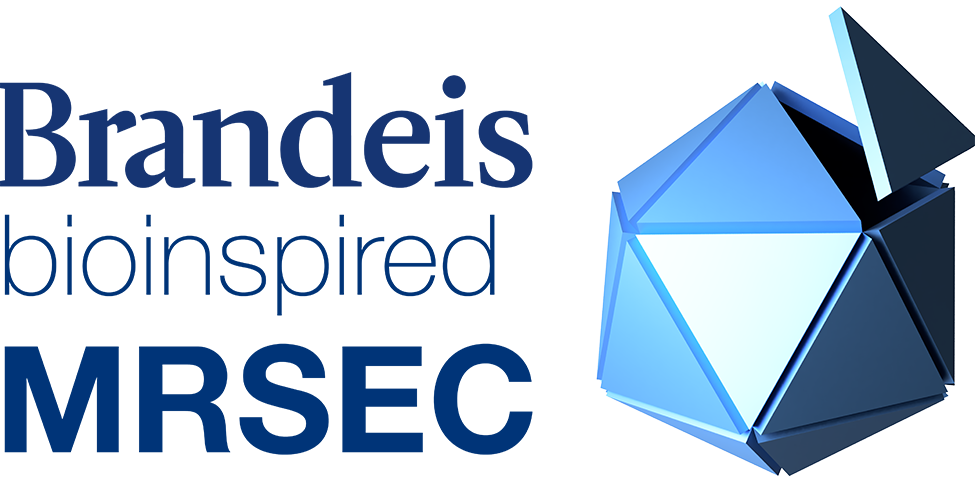2012 Research Highlights
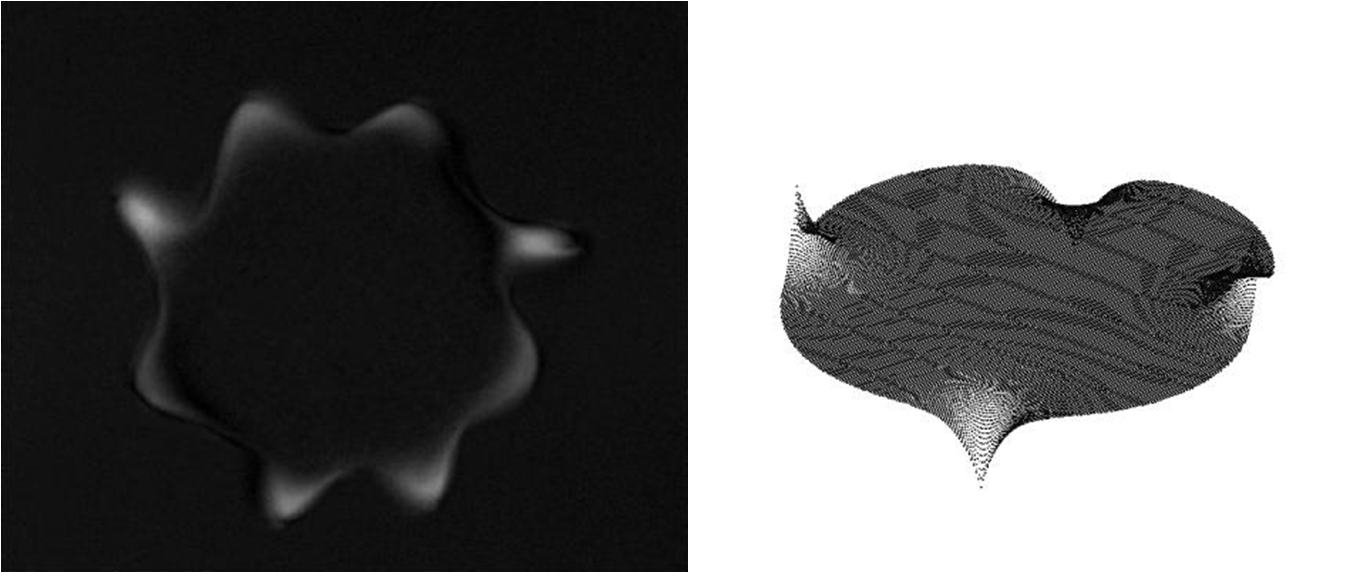
Rodlike fd viruses have been observed in laboratory experiments to self-assemble in the presence of a polymer depletant into a variety of geometric structures including “cookie disks,” membranes with radial protrusions and alternating hills and valleys (see the microscope picture and schematic illustration above). Tu, Pelcovits and Meyer have developed a theoretical model of these unusual structures based on a mathematical conjecture for the observed shape. Their theory utilizes a free energy which was previously used to successfully understand the formation of twisted ribbons in the fd system. As in the latter case it is the tendency of fd rods to assemble into structures with negative Gaussian curvature that plays a crucial role in the formation of the observed structure. The theory yields predictions in good agreement with experiment for the scale of the hills, valleys and radial protrusions and the orientation of the fd viruses.
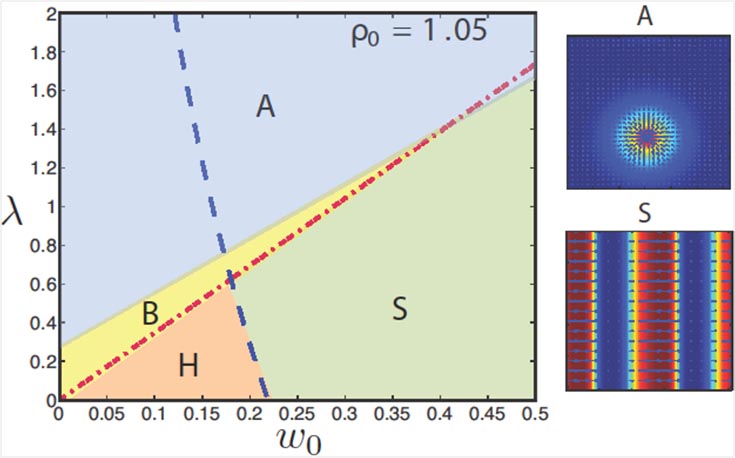
Active fluids such as bacterial suspensions, cytoskeletal filaments interacting with motor proteins, and artificial microswimmers have been shown to exhibit a rich array of pattern formation phenomena. In this work Gopinath, Hagan and Baskaran showed that the key mechanism for the emergence of structures is self-regulation. This is a consequence of the fact that the control parameter of the order disorder transition, namely the density, is itself dynamically modified by the order parameter that it induces. In the context of active polar fluids (where the symmetry breaking results in vector ordering) they have demonstrated the existence of solitary waves and asters (see Figure) in different regions of physical parameter space.
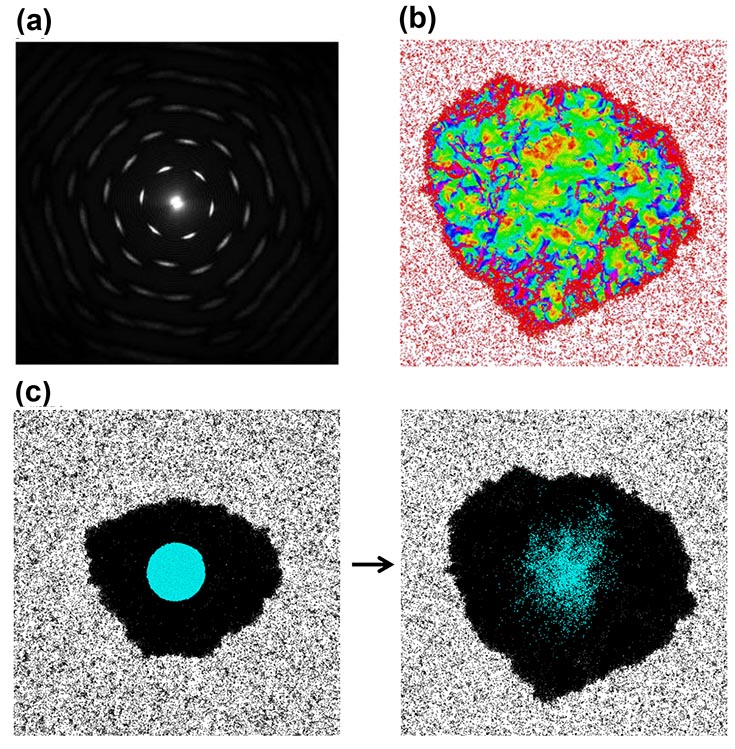
Computer simulations of self-propelled spheres in 2d carried out by G. Redner, A. Baskaran and M. Hagan predict a new form of matter: an active crystal. (a) The structure factor for an example active crystal showing crystallinity. (b) Instantaneous speed of particles within the system, illustrating the inhomogeneous motion within the crystal. (c) Particles in the active crystal undergo diffusion. The image shows the analog of a FRAP experiment. The particles which start in the center are labeled blue; the image to the right shows a snapshot after evolution of the dynamics.
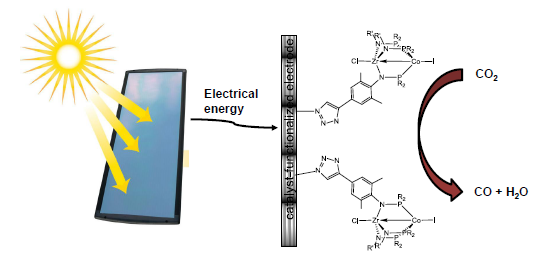
Homogeneous catalysts for renewable energy applications such as the conversion of CO2 (industrial byproduct) into CO (industrially viable carbon feedstock) using solar energy (in the form of converted electrical energy) have been developed using a combination of an early transition metal (Zr) and a late transition metal (Co). The ongoing challenge that this project, using seed funding provided by MRSEC and led by Christine Thomas, addresses is how to improve the efficiency of electron transfer from an electrode surface to a catalyst in solution. The ultimate goal is to develop methods to tether heterobimetallic catalysts or precatalysts to conducting surfaces to both improve the efficiency of electron transfer and design catalyst systems that would be useful on an industrial scale. Catalysts with functionalities amenable to “click” chemistry are under development.
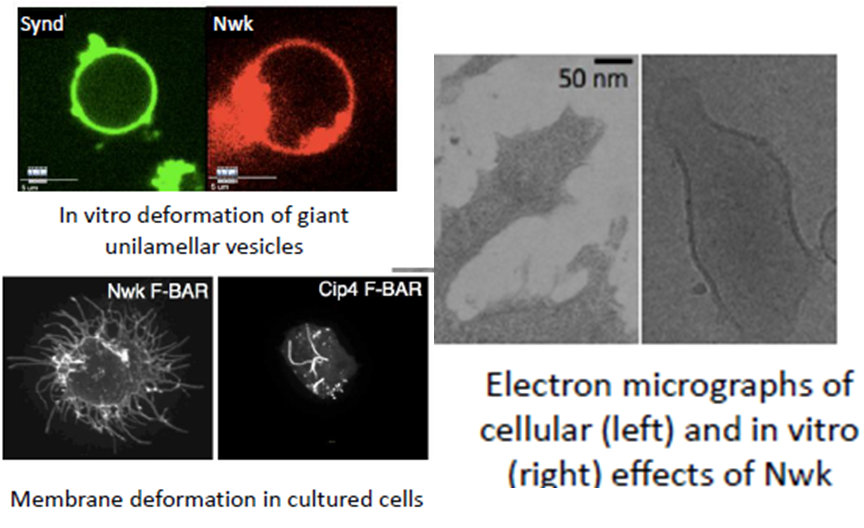
Upper left: In vitro deformation of giant unilamellar vesicles. Lower left: Membrane deformation in cultured cells. Right: Electron micrographs of cellular (left) and in vitro (rights) effects of Nwk.
Biological membranes are pinched, bent and deformed into highly specialized shapes that are tailored for compartmentalizing biochemical processes within cells. In a project with seed funding from the MRSEC, Avi Rodal, in collaboration with Jane Kondev and Mike Hagan, is exploring the physical basis for how a cohort of curved membrane-deforming proteins called F-BAR proteins act to sculpt membranes. The Rodal group has devised biochemical and cellular assays to generate membrane tubules of specific shape, lipid composition and stiffness. These assays allow the use of a combination of experiments and theory to explore how tweaking the membrane deformation machinery modulates membrane organization and structure. They have found that apparently structurally similar membrane deforming proteins produce tubules with very different properties, and are exploring whether the basis for these differences is in properties of protein interaction with the membrane, local changes in membrane composition or the effects of protein assembly into higher order structures.

